
The author introduced the principle and implementation of the dung beetle optimizer (DBO) in an article some time ago. This algorithm was proposed by the team of Professor Shen Bo of Donghua University in 2022 [1]. It was inspired by Different sub-populations of dung beetles perform different search methods for their five habits of ball rolling, dancing, foraging, stealing and breeding, which enables efficient exploration and development of space. Compared with PSO, WOA and HHO, etc. It has the advantages of higher solution accuracy, faster convergence speed, and stronger stability.
Although the dung beetle optimization algorithm has the above characteristics, it also has the problems of other SI algorithms, such as the imbalance of global exploration and local development capabilities, and the tendency to fall into local optimality when faced with complex problems. Its convergence speed and accuracy still need to be improved. possible, so this article will try to improve the dung beetle optimization algorithm to improve its performance.
00 Article Directory
1 Principle of dung beetle optimization algorithm
2 Improved dung beetle optimization algorithm based on multi-strategy fusion
3 Code directory
4 Experimental results
5 Source code acquisition
01 Principle of dung beetle optimization algorithm
The author has introduced the principles of the dung beetle algorithm in previous articles.
From the principle of the dung beetle optimization algorithm, we can derive its basic characteristics: it mainly uses four behaviors (rolling ball, breeding/brooding, foraging, and stealing) to update the position. The rolling ball behavior can make the algorithm have better performance at each stage. The global search ability; while the breeding behavior and foraging behavior will allow the dung beetle to explore around itself and the position of the best individual respectively, and as the iteration proceeds, the dynamic boundary of its search will gradually reduce, and its search range will also will gradually shrink; theft behavior is a dynamic local search near the best individual.
02 Improved dung beetle optimization algorithm based on multi-strategy fusion
This article makes the following improvements based on the characteristics and shortcomings of the dung beetle optimization algorithm.
2.1 Improved Circle Chaos Map Initialization
DBO randomly generates the initial population, which is prone to uneven population distribution, which will lead to a reduction in population diversity, low population quality, and affect the convergence speed of the algorithm.
Chaotic mapping has the characteristics of randomness, non-repetition and chaotic ergodicity [2], which means that it can make the population distribution more uniform than random generation that relies on probability. Therefore, chaos mapping can be used to generate an initial population to increase the diversity of potential solutions. Chaos mappings commonly used in the literature include Logistic mapping, Tent mapping and Circle chaos mapping. The Circle mapping is relatively stable and has a high chaos value coverage [3]. However, considering that the Circle mapping is between [0.2, 0.6] The values are dense and their distribution is not uniform, so the Circle mapping formula is improved [4] to make it more uniform.
Use Logistic mapping, Tent mapping, and improved Circle mapping to make their distribution diagrams:
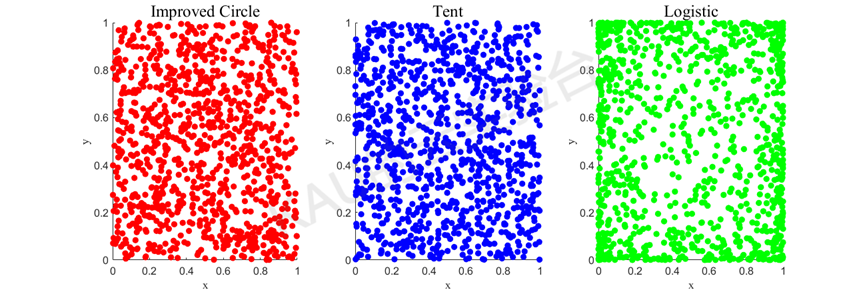
It can be seen from the results that the probability of the value in the middle of the Logistic map is relatively uniform, but the probability is particularly high at both ends. Therefore, when the global optimal point is not at both ends of the design variable space, it is detrimental to finding the optimal point; secondly, although the Tent map has It has better traversability, but there are small cycles in its iterative sequence and unstable cycle points. Therefore, if the sequence falls into it, the sequence will become stable and the algorithm will fail. Finally, the improved Circle mapping is relatively more stable and evenly distributed. Sex is better.
Therefore, this paper chooses to use the improved Circle mapping to initialize the DBO population to improve the distribution quality of the initial population in the search space and enhance its global search capability.
2.2 Nonlinear boundary convergence factor
It can be seen from the update strategy of DBO that its breeding behavior and foraging behavior are restricted to certain areas, namely the spawning area and the foraging area:
Although its spawning and foraging areas are dynamically adjusted with the number of iterations, such a linear reduction strategy is difficult to represent the complex situation of breeding and foraging. We hope that the algorithm will conduct a more extensive search of the global feasible area in the early stage. In the later stage, more emphasis will be placed on local development near the optimal solution to speed up its convergence speed. Therefore, the expression of the boundary convergence factor R is reset as follows:
The iterative changes in the convergence factor before and after the change are as follows:
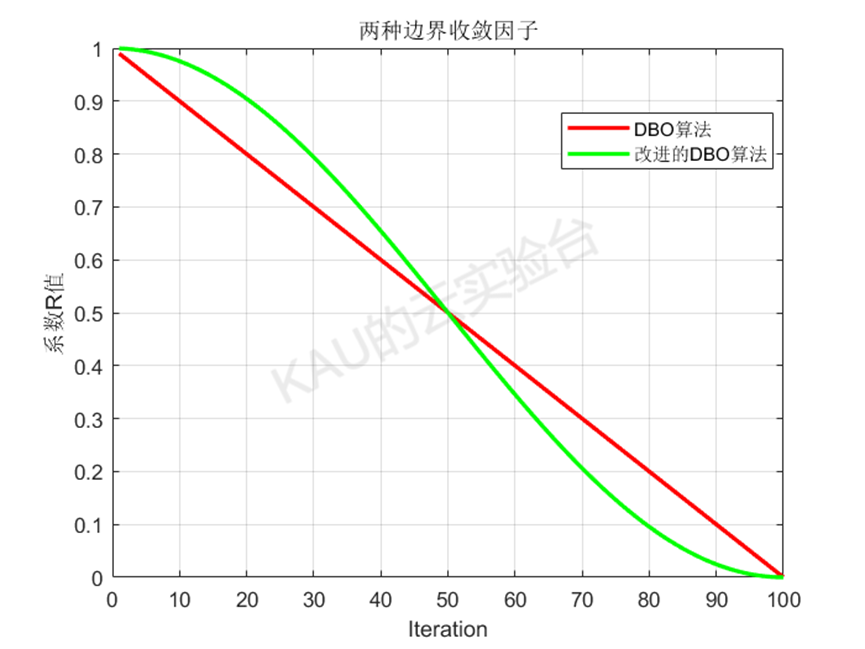
It can be seen from the figure that the improved boundary convergence factor decreases more slowly in the early stage than the convergence factor in DBO, which can make the foraging and spawning areas larger, thereby obtaining better global exploration capabilities, while in the later stage , the improved boundary convergence factor decreases faster in the later stage than the convergence factor in DBO, thereby speeding up the convergence speed of the algorithm.
2.3 Variable spiral search behavior
When whales search for prey, they adjust the movement distance of each position update based on the spiral shape between the target position (i.e., the optimal position) and its own position. This strategy can make great use of regional information and improve search capabilities.
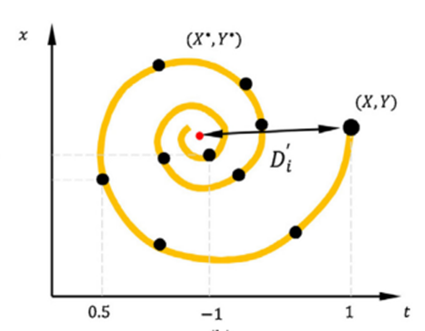
[图源: WOA-TLBO: Whale optimization algorithm with Teaching-learning-based optimization for global optimization and facial emotion recognition]
In the rolling ball behavior in DBO, there is no clear effective target guidance. Although this is conducive to global exploration, it may cause the algorithm to be too random and lack information exchange between individuals, which is not conducive to algorithm convergence in the later stage. Therefore, this article Introducing the spiral update mechanism into the rolling ball behavior of dung beetles. At the same time, in the spiral search model, b controls the shape of the spiral when the individual moves forward, and its value is usually 1. However, this strategy may lead to approaching the prey in a fixed spiral when updating, which may reduce its global optimization ability. , so this article designs this parameter as a dynamic variable to enhance the algorithm's ability to explore the region in a variable spiral path and improve the algorithm's global search ability.
Introducing this variable spiral update mechanism.
This improvement strategy will further coordinate DBO's global exploration and local development capabilities, and enhance the algorithm's ability to jump out of local optimality.
2.4 'The fittest' mechanism
Inspired by the law of survival of the fittest in nature, this paper introduces the 'elimination of the fittest' mechanism to improve the quality of the population solution. It enhances the diversity of the population by eliminating and updating some poor individuals according to certain rules during each iteration, and improves the overall fitness of the population to improve Algorithm performance in complex problems and faster convergence.
Specifically, in each iteration, the individual with poor fitness will be defined as Xw, and then a new individual Xnew is generated based on the best individual and 1 randomly selected individual. The introduction of random individual Xrand provides a certain degree of randomness for the generation of new individuals.
2.5 Parameter adaptive adjustment
It can be seen from the updating method of the dung beetle's stealing behavior that this behavior tends to perform local searches in the optimal location (the best food source):
However, this strategy may lead to rapid assimilation of the thief dung beetles during the iterative process, that is, rapid gathering to the area near the optimal position, which may cause the population to fall into a local optimum and stagnate the search. Therefore, we hope to expand the search scope and increase the diversity of the population as much as possible in the early stage of iteration, and in the later stage of iteration, we hope to perform more accurate optimization near the optimal solution.
From the motion characteristics of Levy flight and Brownian motion, it can be seen that whether it is the alternating mechanism of Levy flight with small steps and occasional long jumps, or the characteristics of Brownian motion that can achieve wide trajectory motion in the control area, neither of these two methods can be realized in a single Global and local searches within regions. However, research has proven [5] that if two search strategies are combined, global exploration and local development can be achieved at the same time, making up for the shortcomings of both parties, which is more effective than a single search strategy. Therefore, this paper integrates these two strategies into the stealing behavior, which not only balances the need for optimization, but its random movement can also improve the algorithm's ability to jump out of the local optimum.
The simulation diagrams of the two movements are as follows:
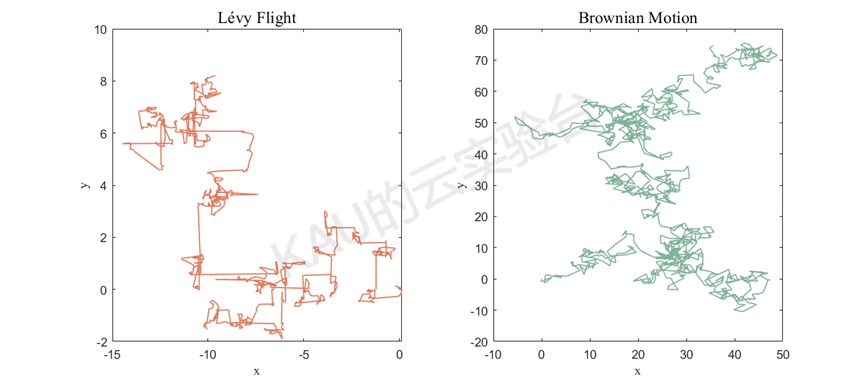
2.5.1 Brownian motion
In the early stage of iteration, the thief dung beetle tends to quickly approach the optimal individual, resulting in insufficient population diversity and easily causing the algorithm to fall into a local optimum. Therefore, this article introduces standard Brownian motion into the position update formula in the early stage of theft behavior to increase the diversity of individual dung beetles and thereby improve the global exploration capability of the algorithm.
2.5.2 Levi’s flight
In the later stages of the iteration, the positions of the thief dung beetles will gather near the current optimal individual. An overly concentrated distribution may cause the algorithm evolution to stagnate and fall into a local optimum. Levy flight is a type of non-Gaussian random walk process with Markov properties characterized by occasional long-distance jumps. It has both small-scale walks and long-distance jumps. Small-scale walks can help the algorithm perform local neighborhood search. , improve the optimization accuracy, and long-distance jumps can disturb the population position, helping the algorithm to explore and jump out of the local optimum. Therefore, Levi's flight was introduced into the position update of the later iteration of the thief dung beetle.
2.6 Algorithm flow
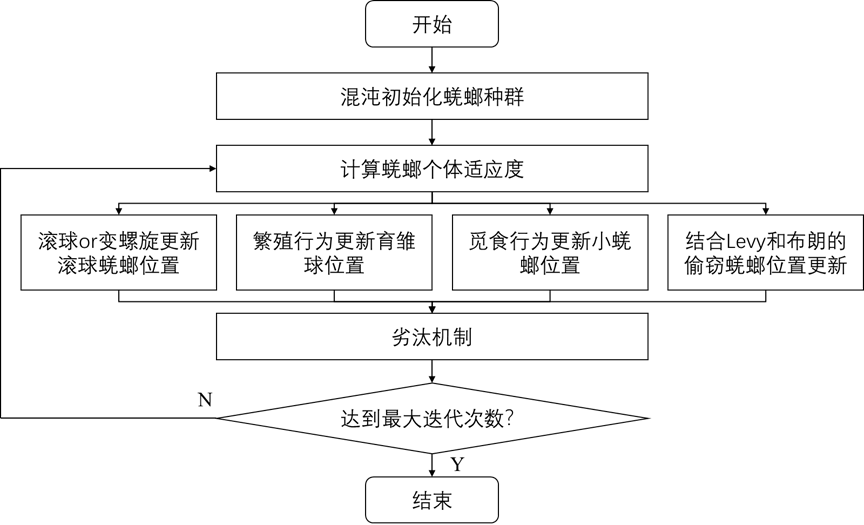
03 Code directory
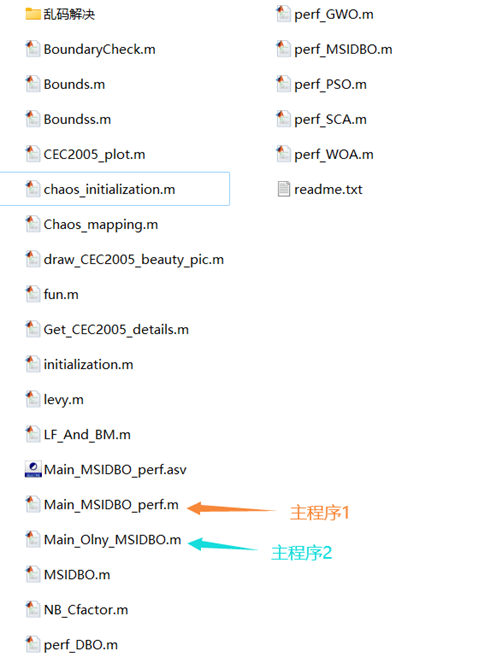
Among them, Main_MSIDBO_perf.m and Main_Only_MSIDBO.m are the main programs. The author explains the use of these two main programs in readme.txt:

The code comments are detailed. Run Main_MSIDBO_perf.m with one click to get all the running results. The running results include chaotic sequence comparison diagrams, convergence factor comparison diagrams, Levy and Brown comparison diagrams, and algorithm iteration diagrams on each test function. Finally, excel will be generated. The table contains the average value, mean value, running time, and optimal solution of the algorithm for n iterations of each function.
At the same time, the garbled files are also resolved, and the txt file of the main code is given.
Part of the procedure is as follows:
Main_Only_MSIDBO.m
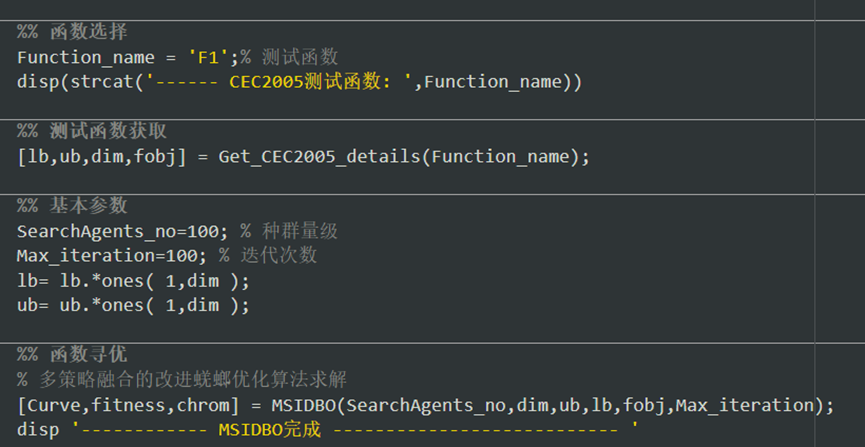
Improved DBO section

04 Experimental results
In this section, the search performance of MSIDBO is verified through 23 classic test functions, and the improved dung beetle optimization algorithm is compared with five other widely studied optimization algorithms (PSO, WOA, SCA, GWO, and DBO).
To ensure the fairness of the experiment, the iteration number and population number of all algorithms are set to 100.
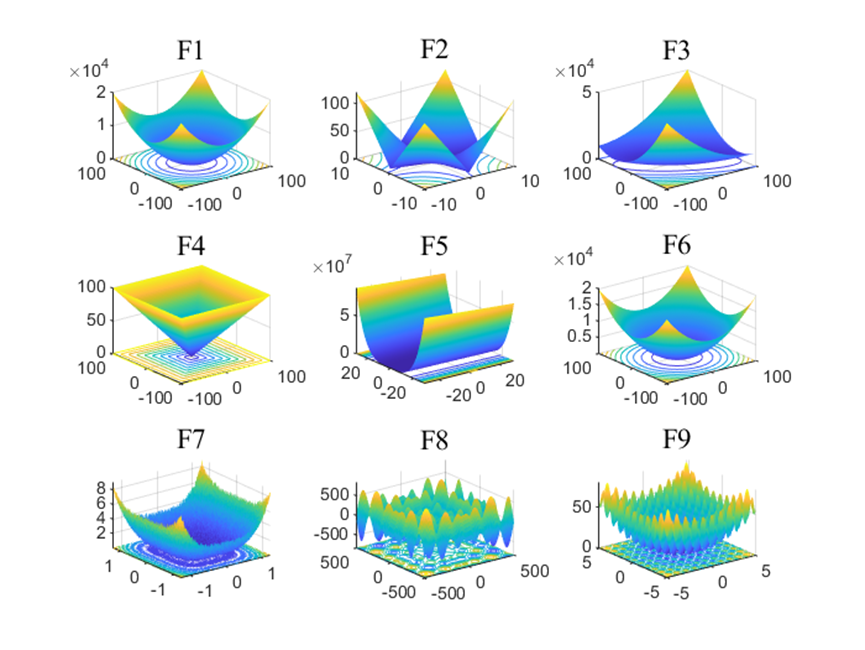
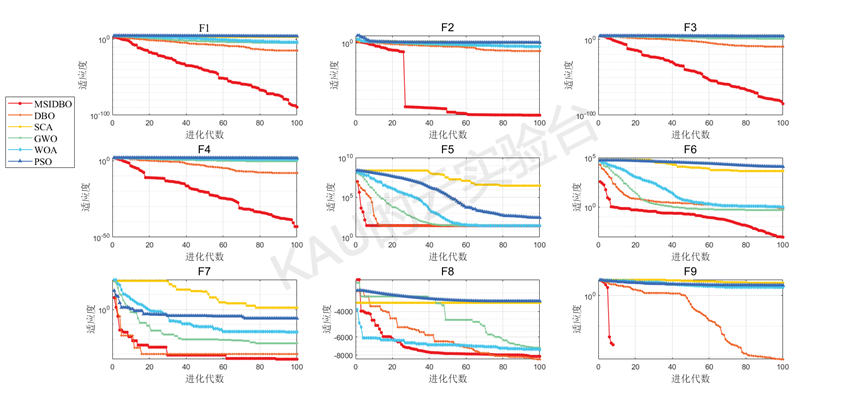
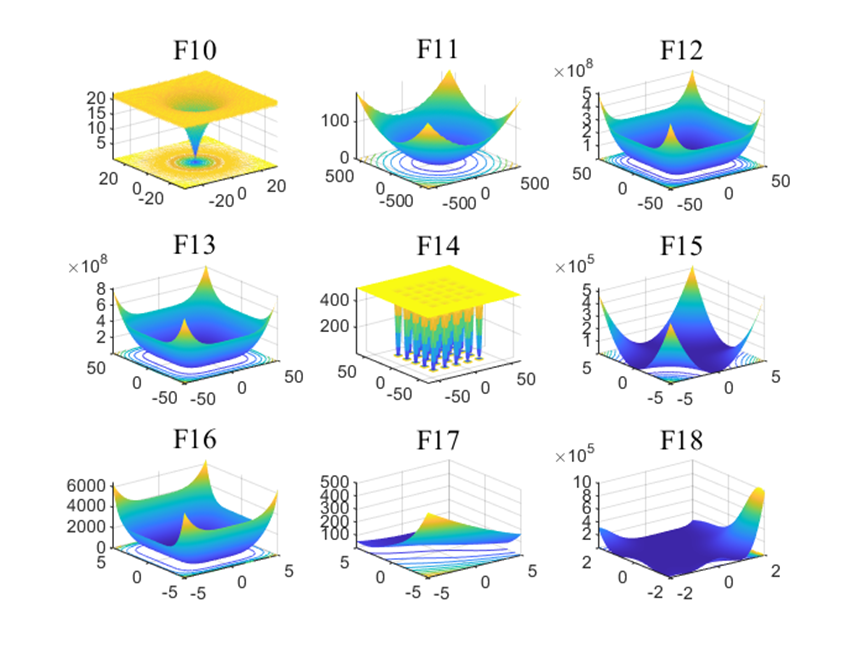
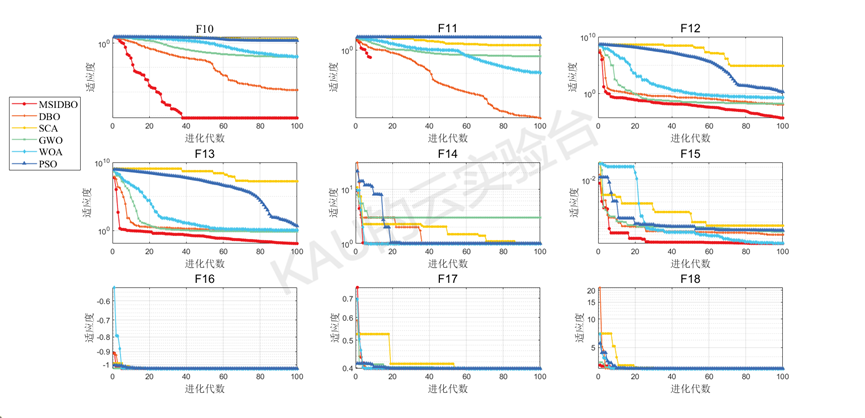

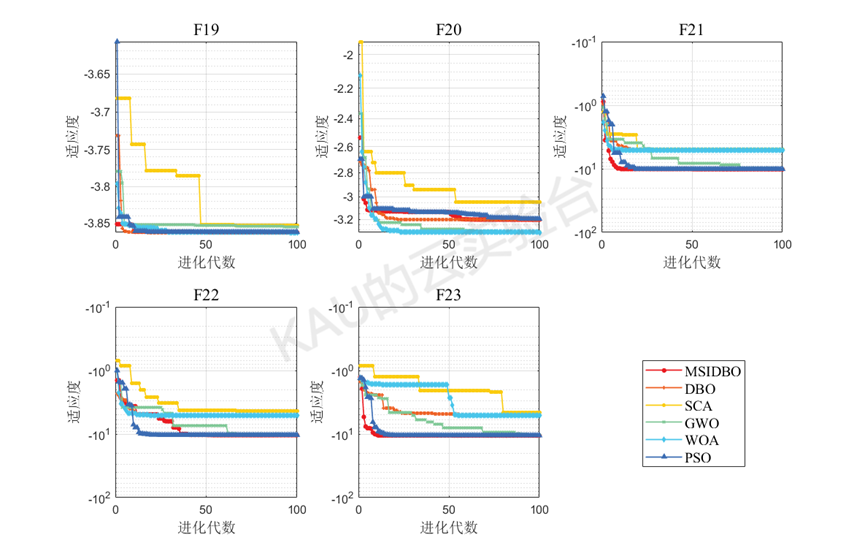
The results obtained by running only the main program of MSIDBO:
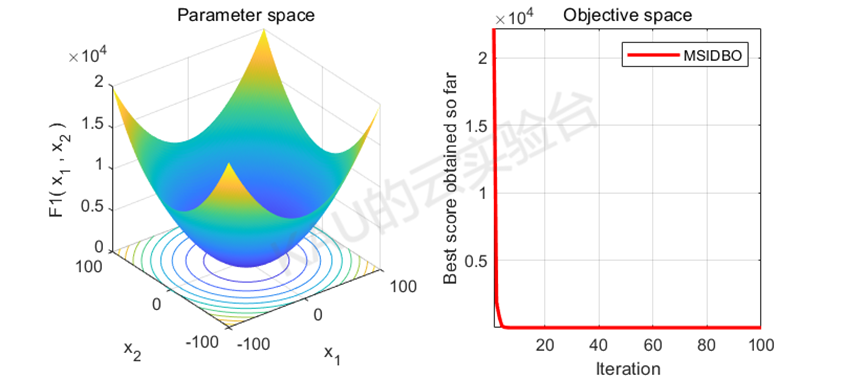
05 Source code acquisition
Reply in the background of GZH (KAU’s cloud experimental platform): MSIDBO
In addition to the code, the file also contains a complete description of the principle and its formulas
references
[1] XUE J K, SHEN B. Dung beetle optimizer: A new metaheuristic algorithm for global optimization [ J ]. The Journal of Supercomputing, 2023, 79(7): 7305-7336.
[2] Shi X,Li M. Whale Optimization Algorithm Improved Effectiveness Analysis Based on Compound Chaos Optimization Strategy and Dynamic Optimization Parameters [c]//2019 International Conference on Virtual Reality and Intelligent Systems( ICVRIS) . 2019:123-126.
[3]ZHANGD M, XU H, WANG Y R, et al. Whale optimization algorithm for embedded Circle mapping and onedimensional oppositional learning based small hole imaging[J]. Control and Decision, 2021, 36(5): 1173-1180(in Chinese).
[4] Song Liqin, Chen Wenjie, Chen Weihai, etc. Improvement and application of sparrow search algorithm based on hybrid strategy [J]. Journal of Beihang University, 2023, 49(8): 2187-2199.
[5] Bartumeus F, Catalan J, Fulco U L, et al. Optimizing theEncounter Rate in Biological Interactions: Levy Versus Brownian Strategies[J]. Physical Review Letters,2002,88(9): 097901.
[6] MANTEGNA RN.Fast,accurate algorithm for numericalsimulation of Levy stable stochastic processes [J]. PhysicalReview. E,Statistical Physics,Plasmas,Fluids,and RelatedInterdisciplinary Topics,1994,49(5): 4677-4683.
Another note: If anyone has optimization problems to be solved (in any field), you can send them to me, and I will selectively update articles that use optimization algorithms to solve these problems.
If this article is helpful or inspiring to you, you can click Like/Reading (ง•̀_•́)ง in the lower right corner (you don’t have to click)